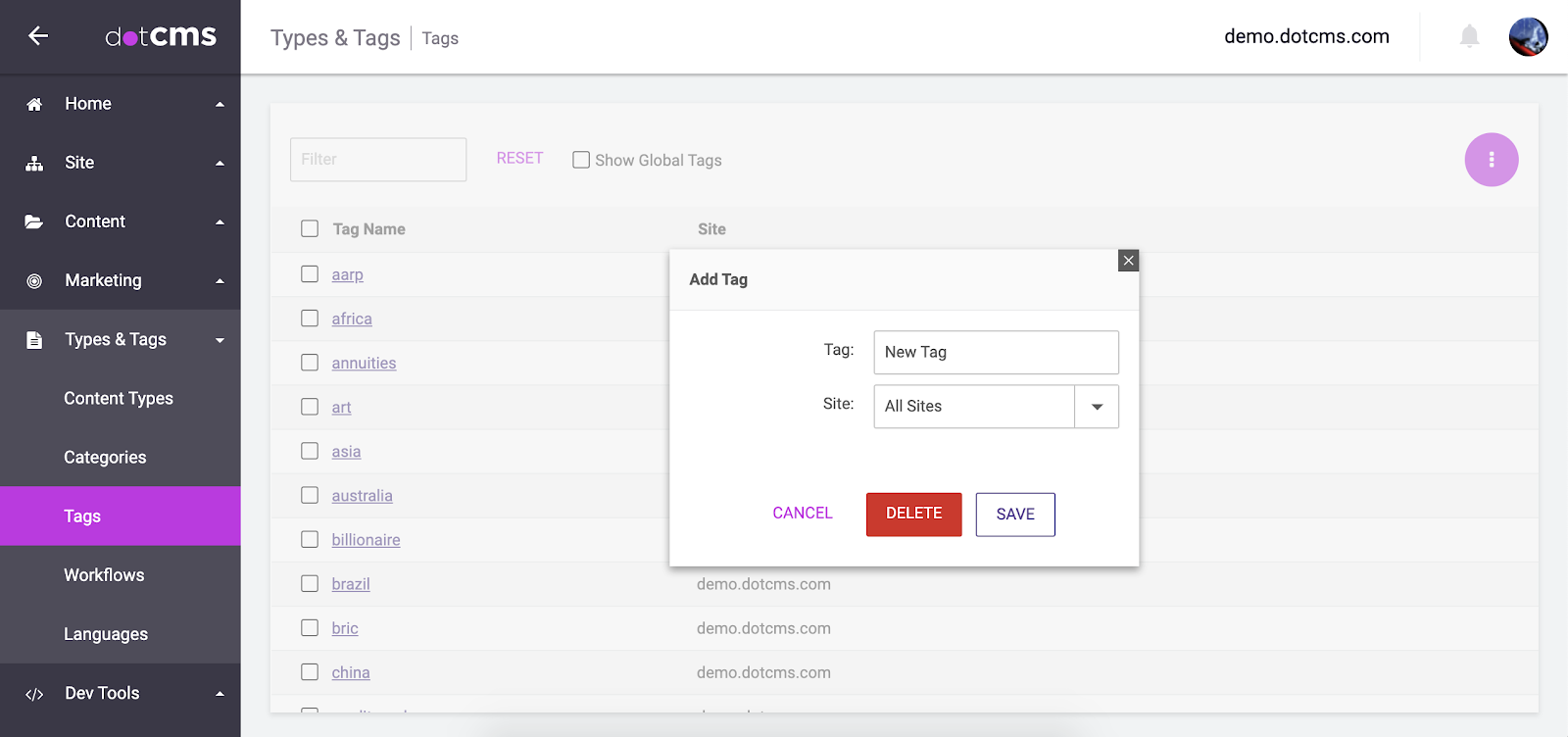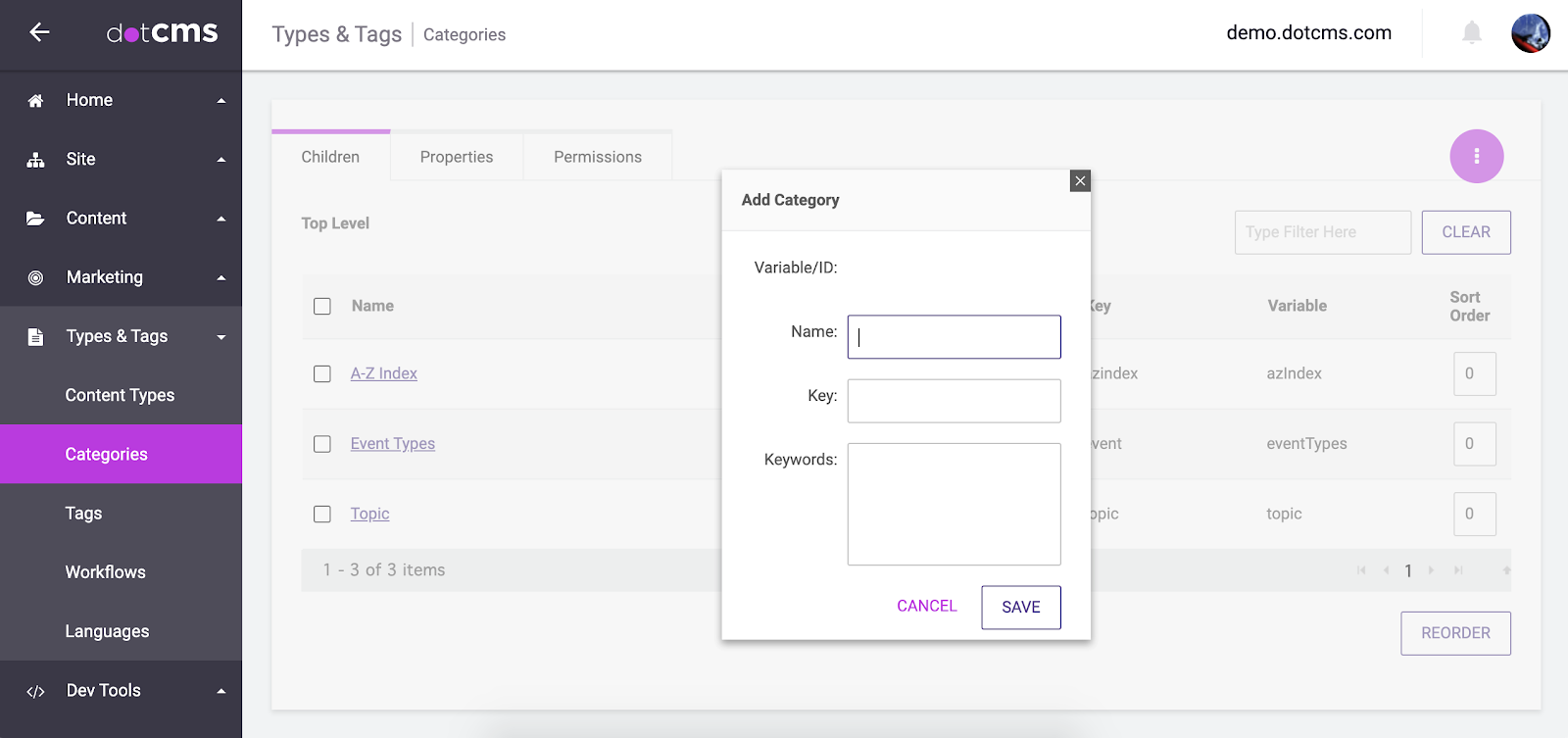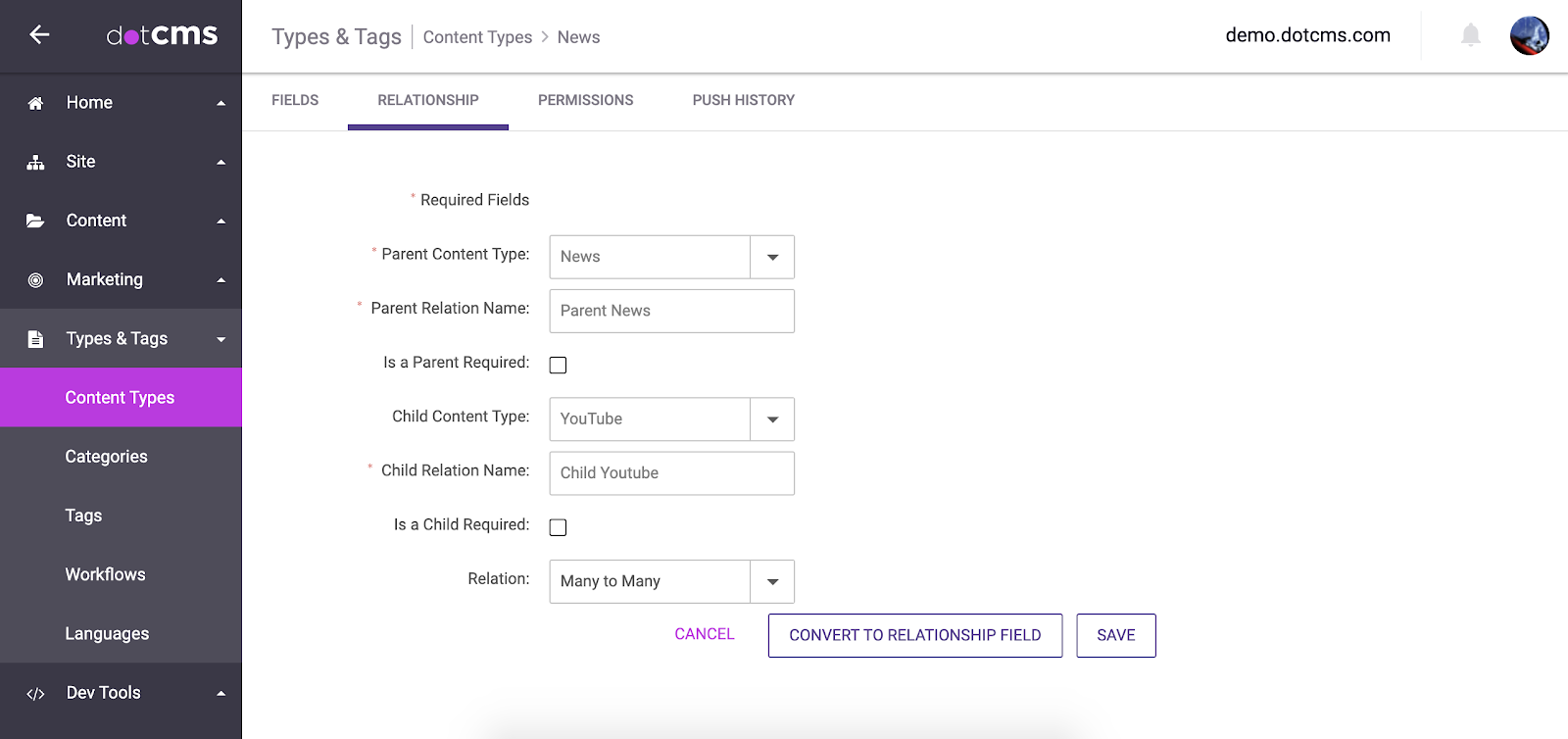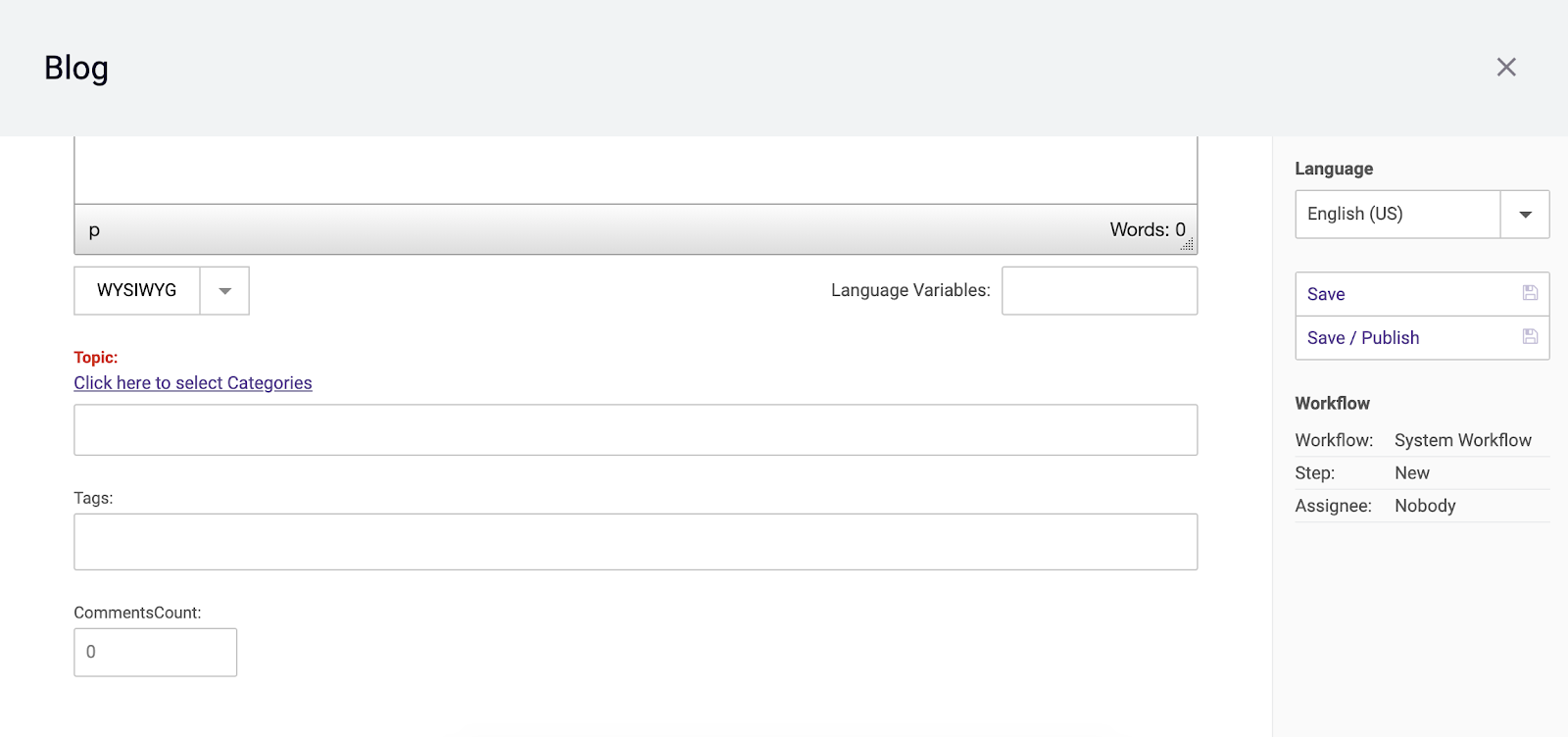dotCMS Taxonomies & Tags: The Key Pillar of Online Conversions
Enterprise companies are producing vast amounts of content in an effort to deliver highly dynamic and personalized digital experiences. In fact, 43% of B2B marketers say blogging is the most important content they produce and a staggering 5 million blog posts are written each day.
This overwhelming amount of new content means marketers need to streamline their efforts for organizing, retrieving, and delivering an ever-increasing volume of content. That’s where taxonomies come into play. Taxonomies ensure product and promotional content is leveraged to drive conversions and other positive business outcomes.
Let’s look at why content structure matters and how to get it right with dotCMS.
Why Does Content Structure Matter?
Content structure or taxonomy is the hierarchy and relationship between content that drives indexing, organization, and other crucial content management processes. Metatags and other labeling capabilities make it easier to find and retrieve content for internal marketing teams and site end users.
A strong taxonomy also creates organization and consistency that streamlines the management of content for marketing teams to deliver relevant content to users. Content that’s well-labeled is much easier to associate with specific target audiences or market segments, and that means it’s easier to create web pages with dynamic content that’s actually relevant to site visitors.
If taxonomies aren’t used properly or planned thoroughly beforehand, then the content can be lost or hard to find and marketing teams may end up wasting time and money on recreating content. In addition, if taxonomies are confusing, then it’s harder for frontend applications to pull the most relevant content dynamically. Content structure, therefore, is essential for creating efficient marketing workflows and delivering highly personalized digital experiences. Beyond this, taxonomies are paramount for laying a strong content foundation that drives customer conversions and reduces the total cost of ownership of the digital experience platform for enterprises.
How dotCMS Handles Taxonomies
The greatest challenge with taxonomies is the human resources involved. Usually, it takes enormous amounts of time to design and implement them, especially for large enterprises with a lot of existing content. That’s why dotCMS has streamlined the process of defining taxonomies by breaking them down into tags, categories, and relationships.
Tags
Content Types within dotCMS can have a Tag Field that lets content creators label the content with one or more tags. These tags can be new or existing tags, and dotCMS automatically suggests tags from the Tag Pool that may be relevant in order to ensure consistency and enforce naming conventions. The auto-suggested tags aren’t just previously created ones, but also tags from previously defined Personas.

When using dotCMS as an omni-channel solution, the number of tags in the Tag Pool can quickly get challenging to manage. That’s why the platform has separate tag repositories — or collections of tags — for each host managed by a particular dotCMS instance. By default, however, new tags are automatically added to the Global Tag Repository that contains the tags for all hosts. These tag repositories can be easily updated and maintained within the Tag Manager by webmasters.
Tags are most useful when you don’t know which tags will be relevant ahead of time, which is common for user-generated content. In addition, tags make it easier to associate content with personas when delivering personalized content. Since there are little restrictions on tags, they’re not reliable for pulling dynamic content lists, and dotCMS offers a better option for this.
Categories
Categories are predefined labels created by webmasters that content creators can select from but not create themselves. The limitation of categories, however, make them more reliable for pulling dynamic content. Categories are also hierarchical, meaning they can be organized into subcategories that go from broader labels to more specific. For the most granular level, tags are likely still the best option though.

The most important use-case for categories is pulling dynamic content for entire pages or containers. This includes website sections that are frequently updated with new content like news, press releases, or blogs. In general, it’s best to limit top-level categories to around thirty labels and to avoid subcategory levels greater than three. This will help ensure your categories do not become too unwieldy as your website and stored content grow.
Relationships
Relationships are used to define a hierarchy for different content types. This creates a parent-child relationship between individual pieces of content. Relationships must be defined by webmasters first, and then content creators have the option to choose related content when they’re creating new content.

If you need to find content based on other similar content with a different content type, then relationships are essential. Relationships can be anything from teams and players to movies and actors. Content can have both parent relations and child relations, and the relation can be one-to-many or many-to-many. Unlike categories that can quickly become overwhelming, relationships can scale as your website grows and still deliver dynamic content efficiently.
It’s important to note that content can have a combination of tags, categories, and relationships based on the fields included with its Content Type definition. Using multiple taxonomies ensures content is highly searchable and also easy to pull dynamically from frontend applications.
With movies, for example, categories can be used to define a limited set of genres while tags can be used for more granular descriptors. And using relationships, you could define an actor relation so that you can retrieve a list of actors in a movie or a list of movies with an actor.

dotCMS Taxonomies Drive Personalization And Efficiency
Taxonomies are crucial to effective content management, but without the right tooling, content structure is expensive to implement. Using robust dotCMS taxonomy capabilities, companies can dramatically improve their ROI on content marketing while providing a better customer experience.
Content structure enables greater content discovery, and therefore, eliminates duplicate efforts, lost content, and other common challenges associated with managing vast amounts of data. That means dotCMS can reduce the costs of content creation while ensuring higher content velocity. This is critical with the growth of omnichannel marketing and the constant demand for new content.
Beyond this, dotCMS leverages taxonomies to deliver dynamic digital experiences. By following taxonomy best-practices, companies can provide highly relevant content to customers that’s associated with particular site visitor Personas. Learn more about these personalization features with our Personalization & Content Targeting Product Brief.
Recommended Reading
Benefits of a Multi-Tenant CMS and Why Global Brands Need to Consolidate
Maintaining or achieving a global presence requires effective use of resources, time and money. Single-tenant CMS solutions were once the go-to choices for enterprises to reach out to different market...
Headless CMS vs Hybrid CMS: How dotCMS Goes Beyond Headless
What’s the difference between a headless CMS and a hybrid CMS, and which one is best suited for an enterprise?
14 Benefits of Cloud Computing and Terminology Glossary to Get You Started
What is cloud computing, and what benefits does the cloud bring to brands who are entering into the IoT era?